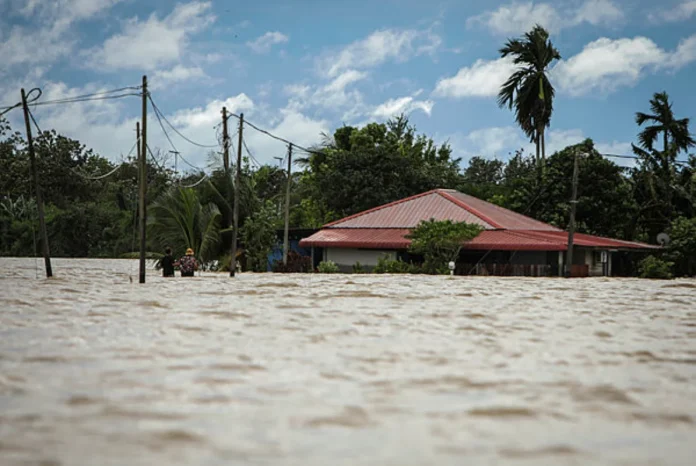MetMalaysia says flooding depends on land-use changes, population density and drainage systems, not just rainfall amounts, amid climate change impacts
KUALA LUMPUR: Flooding during the Northeast monsoon period depends not only on rainfall but also on land factors including land-use changes, population density and drainage system effectiveness.
Malaysian Meteorological Department deputy director-general (operations) Ambun Dindang said rapid development and terrain alterations can produce different effects even with identical rainfall amounts.
“The area might flood or not depending on what happens to the terrain, including development, population density and drainage changes,” he said during Bernama TV’s Ruang Bicara programme titled ‘Understand the Monsoon, a Nation under Alert’.
Climate change and global warming also affect existing weather systems, causing more frequent extreme and intensive weather events.
“Every one degree of global warming can cause the atmosphere to store seven per cent more humidity, leading to heavy downpours,” he explained.
Rising sea temperatures could cause coral bleaching while melting ice caps and glaciers would raise sea levels, creating further implications for coastal Malaysia.
Ambun noted that increased typhoon strength and frequency affecting the Philippines and Vietnam recently also reflect global warming impacts.
MetMalaysia continues strengthening its early warning system’s three components: data gathering, data processing and information dissemination.
Weather models produce early warnings within a three-day period, with updates whenever atmospheric changes are detected.
“Three days before the incident is the best believable warning, but the model changes daily,” Ambun stated.
He advised the public, especially flood-prone area residents, to monitor current weather alerts and follow authority instructions.
Information seekers can visit MetMalaysia’s website, social media channels or download the MyCuaca application. – Bernama







